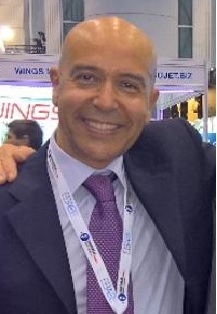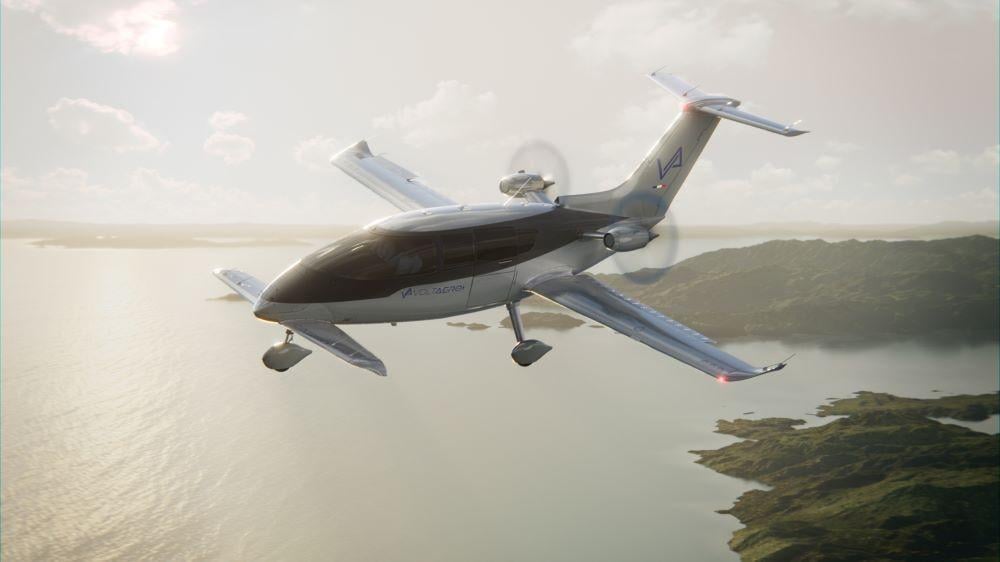VoltAero Redesigns Hybrid Cassio 330 To Speed Certification
Details
More Products & Services
Products & Services
Home - Aviation Group Marketing
Aviation Week Network
120 data points on over 156,000 commercial and business aviation aircraft, including military transports. Discover the most trustworthy resource for the complete aircraft history, plus ad hoc reports, month-over-month trend analysis and details on expected deliveries through 2050.
Aerospace | Aviation Week Network
Aviation Week Network
https://aviationweek.com/themes/custom/particle/dist/app-drupal/assets/awn-logo.svg
People

Andrea Rossi Prudente
Aviation Week Network

Anthony Lim
Aviation Week Network
Sales director

Becca Balmes
Aviation Week Network

Belinda Tan
Aviation Week Network

Brian Everstine
Aviation Week Network
Editor

Eddie Krankowski
Aviation Week Network
Assistant Manager, Tradeshows

erving dockery
Aviation Week Network

Lisa Tan
Aviation Week Network
Senior Marketing Manager

Mark Thomas
Aviation Week Network
Description
LE BOURGET—French startup VoltAero has redesigned its hybrid-electric Cassio 330 in a bid to ensure an easier path to certification with the European Union Aviation Safety Agency (EASA).
The original design for the five-seat Cassio 330 had a parallel hybrid powertrain with both a thermal engine and electric motor driving a pusher propeller mounted on the rear fuselage between tail booms linked by a high-set horizontal tail.
The new design has two electric engines mounted on the aft fuselage, forward of a T-tail, driving pusher propellers and powered by an auxiliary power unit (APU) and generator in the fuselage. The aft-set main wing and canard foreplane are retained.
The change is a result of working with EASA since October 2021 on certification of the Cassio 330, VoltAero CEO Jean Botti says. “They came to us and said you have one propeller at the back. What if a blade detaches and hits the horizontal tailplane or a boom? How do you guarantee good stability in flight?
“We understood it would be very difficult to prove, so we said let's go with something that is much more robust,” he says. Founded by the team that developed Airbus' E-Fan two-seat electric aircraft in 2014, VoltAero went back to that configuration, which had two ducted fans mounted on the fuselage sides.
“This design is essentially a spinoff of the E-Fan, but with propellers on each side,” Botti says. The original design was a pure hybrid–the propeller could be powered by the thermal engine, electric motor or both–and the new design loses that flexibility but gains the redundancy of having two electric engines.
“You lose that thermal redundancy, but at the same time you have more redundancy because you have one more motor and two separate battery strings. In addition, each motor is split in half because of the way the winding is done and that also creates redundancy,” he says.
“Selecting this architecture—already well-known from the E-Fan 10 years ago—was for us the quickest way to get to a certified aircraft. It does not mean that for the larger Cassio 480 and Cassio 600 we would not go back to a pure hybrid architecture,” Botti says, referring to planned follow-on aircraft.
VoltAero had started building a prototype Cassio 330, but after feedback from the regulator decided to take more time to design something that would be more acceptable to EASA. The startup now plans to assemble the prototype by year's end and fly at the beginning of 2026, aiming for certification by the end of 2027.
The aircraft will fly at first powered by a pair of internal-combustion engines to validate the Cassio 330's aerodynamics while VoltAero bench-tests the hybrid powertrain. “We will go step by step. First we will make EASA comfortable with the architecture of the airplane, the aerodynamics, and then we will bring in the hybrid powertrain,” he says.
VoltAero's original plan was to build its parallel-hybrid powertrain around a four-cylinder Kawasaki internal-combustion engine. For the redesigned aircraft, “We would love to use Kawasaki, but not the four-cylinder. We would like to use one of their more powerful engines as the APU,” Botti says.
Running at a constant, optimum operating condition, the APU will produce 400 hp. “There has been a weight increase. It's a spacious airplane, which is attractive from a comfort standpoint, and it's an airplane that will probably run to a maximum takeoff weight of 2.5 [metric] tons,” he says.
VoltAero is still evaluating alternative suppliers for the motors and batteries. “The batteries will be pretty limited because we just want to make sure we can take off and land all-electric. But once we are at altitude, we will be hybrid,” he says.
To validate the new configuration, VoltAero is using a rotating test bench. This has a small model of the Cassio 330 mounted on the end of an arm that can rotate at up to 110 kt. to show the steady-state behavior of the aircraft without incurring the expense of a wind tunnel test.
“The is a technology used a long time ago by NASA, and also in Italy by Aermacchi, and we decided to make [it] our own because you can iterate on the design so much more,” Botti says. “You can learn a lot with this thing and that is what we have been doing.”
The original design for the five-seat Cassio 330 had a parallel hybrid powertrain with both a thermal engine and electric motor driving a pusher propeller mounted on the rear fuselage between tail booms linked by a high-set horizontal tail.
The new design has two electric engines mounted on the aft fuselage, forward of a T-tail, driving pusher propellers and powered by an auxiliary power unit (APU) and generator in the fuselage. The aft-set main wing and canard foreplane are retained.
The change is a result of working with EASA since October 2021 on certification of the Cassio 330, VoltAero CEO Jean Botti says. “They came to us and said you have one propeller at the back. What if a blade detaches and hits the horizontal tailplane or a boom? How do you guarantee good stability in flight?
“We understood it would be very difficult to prove, so we said let's go with something that is much more robust,” he says. Founded by the team that developed Airbus' E-Fan two-seat electric aircraft in 2014, VoltAero went back to that configuration, which had two ducted fans mounted on the fuselage sides.
“This design is essentially a spinoff of the E-Fan, but with propellers on each side,” Botti says. The original design was a pure hybrid–the propeller could be powered by the thermal engine, electric motor or both–and the new design loses that flexibility but gains the redundancy of having two electric engines.
“You lose that thermal redundancy, but at the same time you have more redundancy because you have one more motor and two separate battery strings. In addition, each motor is split in half because of the way the winding is done and that also creates redundancy,” he says.
“Selecting this architecture—already well-known from the E-Fan 10 years ago—was for us the quickest way to get to a certified aircraft. It does not mean that for the larger Cassio 480 and Cassio 600 we would not go back to a pure hybrid architecture,” Botti says, referring to planned follow-on aircraft.
VoltAero had started building a prototype Cassio 330, but after feedback from the regulator decided to take more time to design something that would be more acceptable to EASA. The startup now plans to assemble the prototype by year's end and fly at the beginning of 2026, aiming for certification by the end of 2027.
The aircraft will fly at first powered by a pair of internal-combustion engines to validate the Cassio 330's aerodynamics while VoltAero bench-tests the hybrid powertrain. “We will go step by step. First we will make EASA comfortable with the architecture of the airplane, the aerodynamics, and then we will bring in the hybrid powertrain,” he says.
VoltAero's original plan was to build its parallel-hybrid powertrain around a four-cylinder Kawasaki internal-combustion engine. For the redesigned aircraft, “We would love to use Kawasaki, but not the four-cylinder. We would like to use one of their more powerful engines as the APU,” Botti says.
Running at a constant, optimum operating condition, the APU will produce 400 hp. “There has been a weight increase. It's a spacious airplane, which is attractive from a comfort standpoint, and it's an airplane that will probably run to a maximum takeoff weight of 2.5 [metric] tons,” he says.
VoltAero is still evaluating alternative suppliers for the motors and batteries. “The batteries will be pretty limited because we just want to make sure we can take off and land all-electric. But once we are at altitude, we will be hybrid,” he says.
To validate the new configuration, VoltAero is using a rotating test bench. This has a small model of the Cassio 330 mounted on the end of an arm that can rotate at up to 110 kt. to show the steady-state behavior of the aircraft without incurring the expense of a wind tunnel test.
“The is a technology used a long time ago by NASA, and also in Italy by Aermacchi, and we decided to make [it] our own because you can iterate on the design so much more,” Botti says. “You can learn a lot with this thing and that is what we have been doing.”

Share
Recent Chats
Share via email
Future: handle WhatsApp here
Future: handle LinkedIn here
Future: handle Twitter here
SUBMENU HERE
Share via Chat
Copy Link

